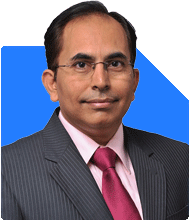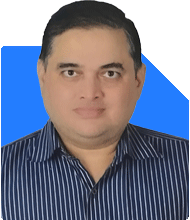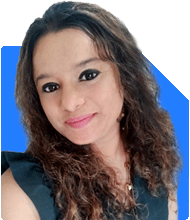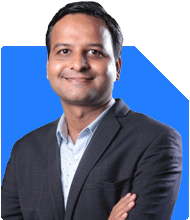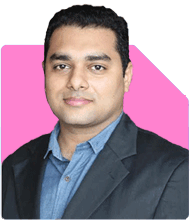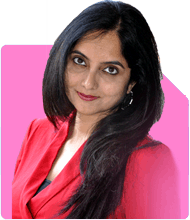
Hi sir I am investing when ever i have money not like in SIP. my most of investments are around 6 L invested in Quant different mutual funds. No a days i can see my all the Quant funds are going down. Im 34 years old female. My plan is 10 years. Can i exit from quant and invest in any some MF rather than getting more loss? Can you please review my portfolian. Do i need to exit from any MF. Since i'm maintaining too many MF. Thanks in advance.
Mutual Funds List No' Scheme Name AMC Category Sub-category ISIN
1 DSP Small Cap Direct Plan Growth DSP Mutual Fund Equity Small Cap INF740K01QD1
2 Quant Focused Fund Direct Growth Quant Mutual Fund Equity Focused INF966L01853
3 Parag Parikh Flexi Cap Fund Direct Growth PPFAS Mutual Fund Equity Flexi Cap INF879O01027
4 Mirae Asset ELSS Tax Saver Fund Direct Growth Mirae Asset Mutual Fund Equity ELSS INF769K01DM9
5 JM Flexicap Fund Direct Plan Growth JM Financial Mutual Fund Equity Flexi Cap INF192K01CC7
6 Axis Growth Opportunities Fund Direct Growth Axis Mutual Fund Equity Large & MidCap INF846K01J46
7 Parag Parikh ELSS Tax Saver Fund Direct Growth PPFAS Mutual Fund Equity ELSS INF879O01100
8 Quant Small Cap Fund Direct Plan Growth Quant Mutual Fund Equity Small Cap INF966L01689
9 Canara Robeco Small Cap Fund Direct Growth Canara Robeco Mutual Fund Equity Small Cap INF760K01JC6
10 Motilal Oswal Midcap Fund Direct Growth Motilal Oswal Mutual Fund Equity Mid Cap INF247L01445
11 Nippon India Multi Cap Fund Direct Growth Nippon India Mutual Fund Equity Multi Cap INF204K01XF9
12 Nippon India Small Cap Fund Direct Growth Nippon India Mutual Fund Equity Small Cap INF204K01K15
13 ICICI Prudential Value Discovery Direct Growth ICICI Prudential Mutual Fund Equity Value INF109K012K1
14 Quant Flexi Cap Fund Direct Growth Quant Mutual Fund Equity Flexi Cap INF966L01911
15 Nippon India Small Cap Fund Direct Growth Nippon India Mutual Fund Equity Small Cap INF204K01K15
16 Quant ELSS Tax Saver Fund Direct Growth Quant Mutual Fund Equity ELSS INF966L01986
17 Aditya Birla Sun Life PSU Equity Fund Direct Growth Aditya Birla Sun Life Mutual Fund Equity Sectoral / Thematic INF209KB1O82
18 Quant Mid Cap Fund Direct Growth Quant Mutual Fund Equity Mid Cap INF966L01887
STOCKS LIST:
1 APOLLO TYRES-EQ RE 1
2 ASIAN PAINTS EQ
3 BRITANNIA IND-EQ1/-
4 CG POWER-EQ2/
5 IRCTCL-EQ2
6 NHPC LIMITED - EQ
7 TATA STEEL-EQ1/
8 Deepak nitrate
9 LT
10 Narayana Hrudayalaya
Ans: You are actively investing, which is an excellent habit. However, managing too many funds can dilute returns and complicate tracking. Here's a detailed evaluation of your portfolio and suggestions for improvement.
Observations About Your Current Investments
Quant Funds’ Performance: Quant mutual funds have been volatile recently. Market phases can impact returns in the short term. However, their active management style often delivers strong long-term results. Reviewing their performance regularly is key.
Over-Diversification: Your portfolio has too many mutual funds, leading to overlapping investments. This makes tracking performance challenging and reduces overall returns. Consolidation is advisable.
Direct Mutual Funds: While direct plans have lower expense ratios, they require regular monitoring. If you lack time for constant tracking, investing through a Certified Financial Planner (CFP) can be beneficial.
Stock Investments: Your stocks are spread across sectors. While some are strong companies, direct stock investments demand active monitoring and deep analysis. Diversifying further into mutual funds might be better aligned with your long-term goals.
Tax-Saving Funds (ELSS): You have three ELSS funds. This creates unnecessary duplication. A single, well-performing ELSS fund is sufficient for tax-saving needs.
Goal Alignment: Your goal is 10 years. For this horizon, equity-heavy investments are ideal, but they must be consolidated for better returns.
Key Recommendations
1. Consolidate Your Mutual Funds
Having too many funds spreads your investments thinly. Instead, focus on 5–7 funds across categories. This will provide diversification without duplication.
Suggested allocation categories:
Large-Cap: One fund to provide stability and steady returns.
Flexi-Cap: One or two funds for flexibility in market capitalization.
Mid-Cap and Small-Cap: Two funds to capitalise on growth potential.
ELSS: One fund for tax-saving benefits.
Consolidation will reduce overlaps and improve overall efficiency.
2. Retain or Exit Quant Funds?
You can retain Quant Small Cap and Quant Flexi Cap if their long-term fundamentals are strong. Exit from others if performance consistency or fund overlap is an issue. Diversify with funds from other AMCs for better balance.
3. Reduce Stock Exposure
Direct stock investments can be risky without regular tracking. Consolidate your stocks and invest the proceeds into diversified mutual funds. This will reduce risk and improve your portfolio’s stability.
4. Monitor Fund Performance
Review mutual fund performance at least annually. Use metrics like returns, expense ratios, fund manager track record, and consistency in delivering returns.
5. Opt for Professional Guidance
Consider investing in regular funds through a CFP. They can provide personalised strategies, regular reviews, and rebalance your portfolio as needed.
Action Plan for Portfolio Restructuring
Step 1: Exit and Consolidate
Exit from underperforming or duplicate funds.
Retain well-performing funds across categories.
Choose funds with strong track records and low volatility.
Step 2: Suggested Fund Allocation
Allocate Rs 40,000 monthly across consolidated categories:
Large-Cap Fund: 25% allocation for stability.
Flexi-Cap Fund: 25% allocation for market cap flexibility.
Mid-Cap Fund: 20% allocation for growth potential.
Small-Cap Fund: 20% allocation for higher returns.
ELSS Fund: 10% allocation for tax-saving needs.
Step 3: Consolidate Stocks
Exit some stocks and reinvest the amount in mutual funds. Focus on reducing sector concentration.
Step 4: Regular Reviews
Review your portfolio semi-annually. Assess market conditions and align your portfolio with your goals.
Disadvantages of Index Funds and Direct Plans
Index Funds
No Active Management: Index funds lack the ability to outperform markets.
Market Dependent: They perform only as well as the index, with no defensive strategy during downturns.
Direct Plans
Higher Effort: Direct plans demand continuous monitoring.
Lack of Guidance: Regular plans via a CFP provide tailored advice, which direct plans do not.
Tax Implications
Keep in mind the new capital gains tax rules:
Equity Funds: LTCG above Rs 1.25 lakh is taxed at 12.5%. STCG is taxed at 20%.
Debt Funds: Gains are taxed as per your income slab.
Consider tax-efficient withdrawals when restructuring your portfolio.
Final Insights
You are on the right track by actively investing for your goals. However, managing fewer, well-performing funds can simplify your journey. Consolidating your portfolio will improve returns, reduce redundancy, and make monitoring easier.
Focus on aligning your investments with your 10-year goal. Use this opportunity to balance risk and returns effectively.
Best Regards,
K. Ramalingam, MBA, CFP
Chief Financial Planner
www.holisticinvestment.in
https://www.youtube.com/@HolisticInvestment






